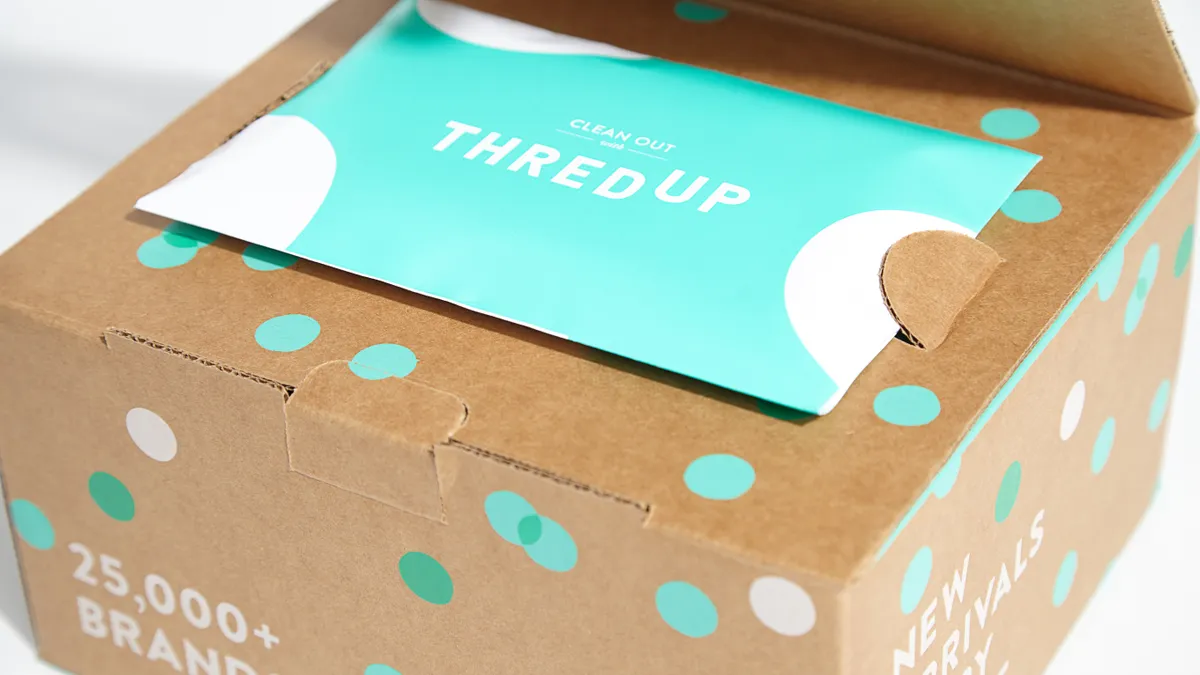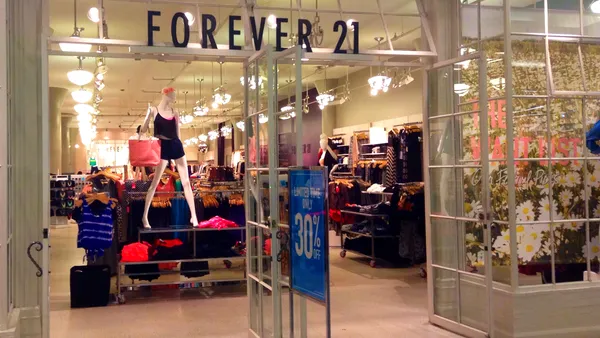Dive Brief:
-
Apparel resale e-retailer ThredUp on Tuesday said total Q4 revenue fell 2.14% year over year to $71.3 million, as its number of active buyers fell 2% to 1.7 million and orders fell 8% to 1.5 million.
-
Gross profit fell 7% to $45 million, and gross margin contracted to 63.1% from 66.1% a year ago. Net loss widened 8.9% to $19.5 million.
-
Its resale-as-a-service business, where ThredUp facilitates secondhand sales for other brands, ended the year with 42 clients, with its roster continuing to expand this year, according to a company press release.
Dive Insight:
One of the oldest and biggest attractions of buying secondhand goods has been to save money, but consumers have been able to get good deals on new clothing thanks to an inventory glut at many apparel chains.
Moreover, from the middle of last year, inflation has kept many from buying at all, even at resale, ThredUp CEO James Reinhart told analysts on a conference call Monday, who noted that was “particularly true for the budget shopper, who represents the majority of ThredUp’s customer base.”
Holiday promotions made already lowered prices that much harder to compete with in the fourth quarter, he also said.
“While we don’t face the same inventory risks as traditional retailers due to our consignment model and flexible supply chain, we believe we were affected by this influx of cheaply priced clothing,” he said. “The ThredUp brand stands for the value and that message was being washed out in this hyper-promotional landscape.”
These challenges are continuing so far this year, but the company sees opportunities ahead, with profitability getting closer in reach in the second half of 2023. Prices at stores selling new clothes are poised to rise and pressures on the consumer are likely to ease, Reinhart said.
The company is conducting various experiments to boost its unit economics as well as attract and keep new customers, he said. That includes a fee for its cleanout service, along with tests in returns management and using real-time data to tweak its own promotions and merchandising mix.
The opening of a new distribution center in Dallas expands the company’s U.S. storage capacity from 6.5 million items to 9 million and boasts advanced technology to help manage single-SKU apparel. With that built, the company expects this year’s capital expenditures to be down 60% year over year, with no significant investments until at least 2025. A lot is riding on such efficiencies, considering that some research shows that resale can only be conducted profitably in brick-and-mortar stores.
But analysts by and large see ThredUp as navigating its difficulties well, with a Wells Fargo team led by Ike Boruchow “encouraged that the model is effectively navigating the volatile macro,” in light of signs of stabilization in the fourth and first quarters and reiteration that it can break even by the second half of the year on a EBIT basis.















